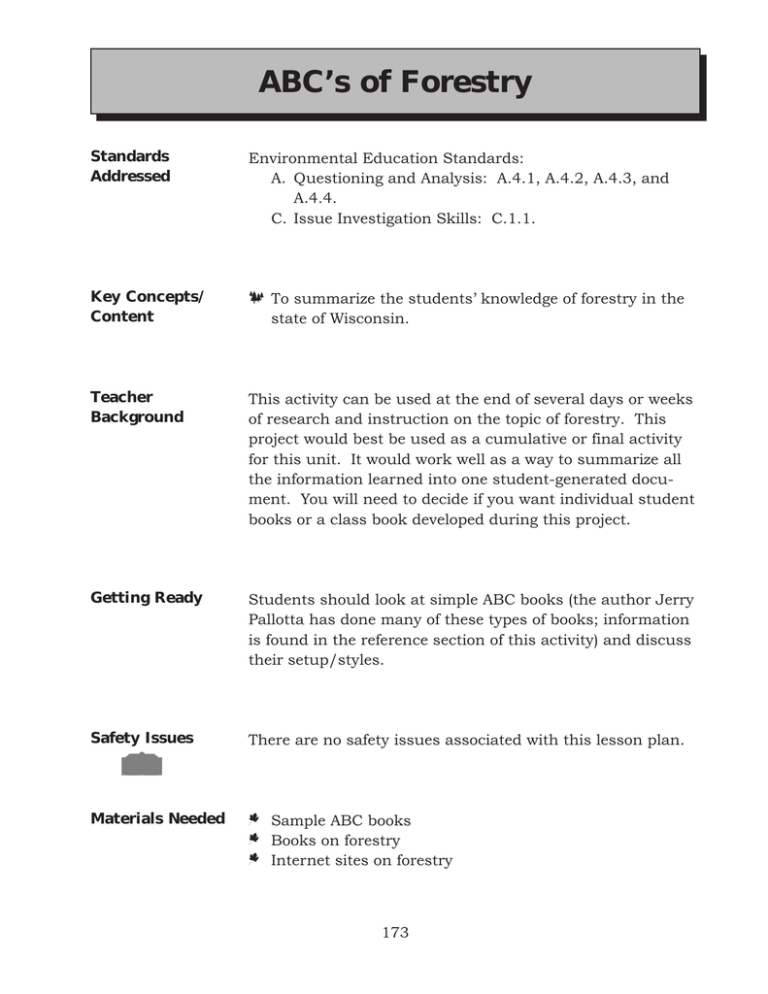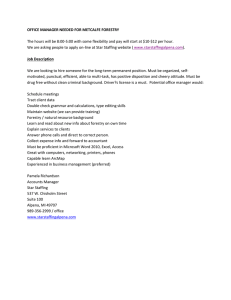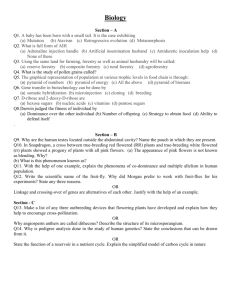ABC’s of Forestry
advertisement

ABC’s of Forestry Standards Addressed Environmental Education Standards: A. Questioning and Analysis: A.4.1, A.4.2, A.4.3, and A.4.4. C. Issue Investigation Skills: C.1.1. Key Concepts/ Content T To summarize the students’ knowledge of forestry in the Teacher Background This activity can be used at the end of several days or weeks of research and instruction on the topic of forestry. This project would best be used as a cumulative or final activity for this unit. It would work well as a way to summarize all the information learned into one student-generated document. You will need to decide if you want individual student books or a class book developed during this project. Getting Ready Students should look at simple ABC books (the author Jerry Pallotta has done many of these types of books; information is found in the reference section of this activity) and discuss their setup/styles. Safety Issues There are no safety issues associated with this lesson plan. Materials Needed J Sample ABC books J Books on forestry J Internet sites on forestry state of Wisconsin. 173 Procedures 1. Students should look at ABC books and discuss their setup/styles. 2. As a class, brainstorm lists of words and/or phrases that relate to the topic of forestry and that begin with the same letter. Create a list like this for a few of the letters of the alphabet (i.e., A = animals, B = butterflies, C = clearcutting, etc.). 3. Ask each individual student to make a list of words and/ or phrases to use for his/her book that relate to forestry. These words and phrases can be found by looking back at information presented and projects done during the forestry unit. Additional research can be done and information obtained through internet sites. 4. For individual books: Explain to the student that each is going to make a big book about the theme forest. Each student is to decide on how to put together his or her big book and then how to publish/display the book. Also suggest they might want to consider a special audience for the book, such as another student or a younger sibling. 5. For a class book: For each word, an explanation and illustration(s) should be developed and included in the page layout for the book. Ask each student to select a page to complete for the book. (You may need to adjust this list depending on the size of your class.) 6. Compile all 26 pages together into the form of a book and create cover pages. You may wan to use some of the handmade paper made in the activity called “Handmade Paper.” Laminating or covering in plastic sheets would make a sturdy cover. A descriptive page about each student author should also be included. 7. For both individual and class books: The books or book may be read to the class or other classes, and the finished product(s) could even be placed in the school library for the remainder of the school year. 174 Extension: Have students find a book about trees in the school library or the local public library. Students can share with the class the book they find. Read a book about trees to the class such as The Tremendous Tree Book by Barabara Brenner and May Garelick, 1979, Boyds Mills Press, Inc. Evidence of Student Understanding Before this project, the teacher and students should develop a grading rubric that clearly states what the finished book must include. The student and teacher can then use this rubric in a project post-conference to determine the grade earned. Some of the requirements for this project might be using words that relate to forestry, a well-written sentence for each letter, well-done illustrations, etc. References/ Resources & Jerry Pallotta is the author of many different ABC books on topics ranging from ocean life to extinct plants and animals. To find examples, go to Amazon.com on the internet and type in the author’s name and do an author search. 175 176

